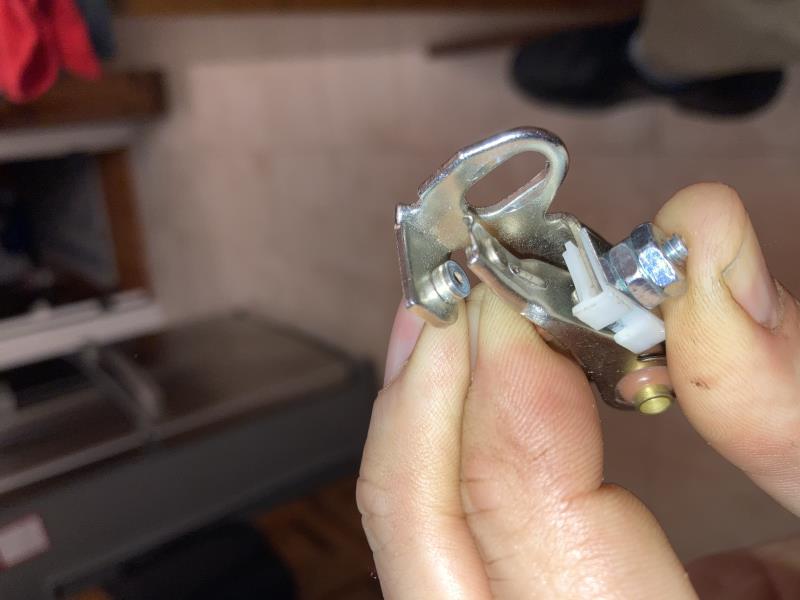I had a breakdown recently due to a weak spark. I am not sure that I understand what the underlying problem was, and would like to make sure I fixed it for good. Here are the details:
The breakdown consisted of the sudden onset of misfiring, leading to an engine stall. Once stalled, the engine would not fire, but holding the coil wire near a ground while cranking showed a consistent orange spark. The spark would not appear if I opened the gap more than about 1/8”. On the roadside using an engine analyzer and a multimeter, it appeared that I had excessive voltage drop (0.4V) from coil negative to ground, and that most if not all of this drop was through the points themselves. The multimeter I had available would not give a reliable low-ohm reading, so the coil was suspect as well, because I couldn’t verify primary resistance.
I replaced the coil first because that was easier to do. The coil is the internal resistance type and sees 12V on the positive side. The new coil didn’t make any observable difference in spark quality, so next I tried cleaning the points with some 350-grit sandpaper, still trying to avoid a roadside point replacement job. The voltage drop through the points was reduced to more like 0.2V and the car was now running, but I didn’t get more than a couple of miles down the road before I had to pull over again due to heavy misfiring.
This time, I installed the new points, set the dwell to 30, and was able to drive to a safe location nearby without any more trouble. The new points yielded an obvious improvement in spark quality.
The next day, at the safe location, I wanted to be sure primary side resistance was minimized so I tested voltage drop with a different, better multimeter. This time I was showing no drop through the points, but 0.2V through the coil-to-distributor wire. I replaced that, and then both my multimeter and analyzer showed less than 0.1V drop from coil to ground. I drove about 20 miles home without any trouble after that.
Before the trouble appeared, the car ran great. Points and condenser were both new with less than 200 miles on them. It seems that the immediate cause of the breakdown was weak spark caused by bad points, as new points set up with the same dwell as the old ones “healed” the misfiring and hard starting immediately. So, why did the first set of points die so quickly?
Here are pictures of the “bad”contact points.

 1954 Crestline Victoria 312 4-bbl, 3-speed overdrive
1954 Crestline Victoria 312 4-bbl, 3-speed overdrive